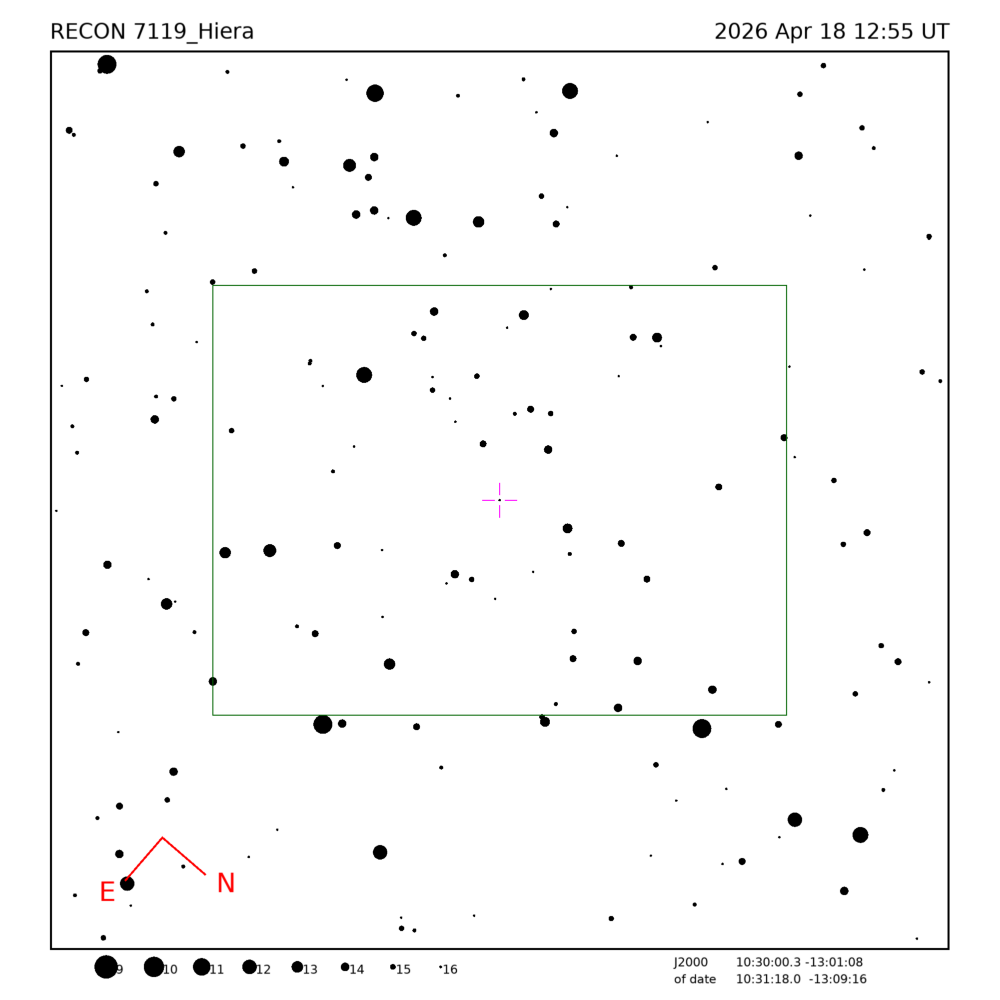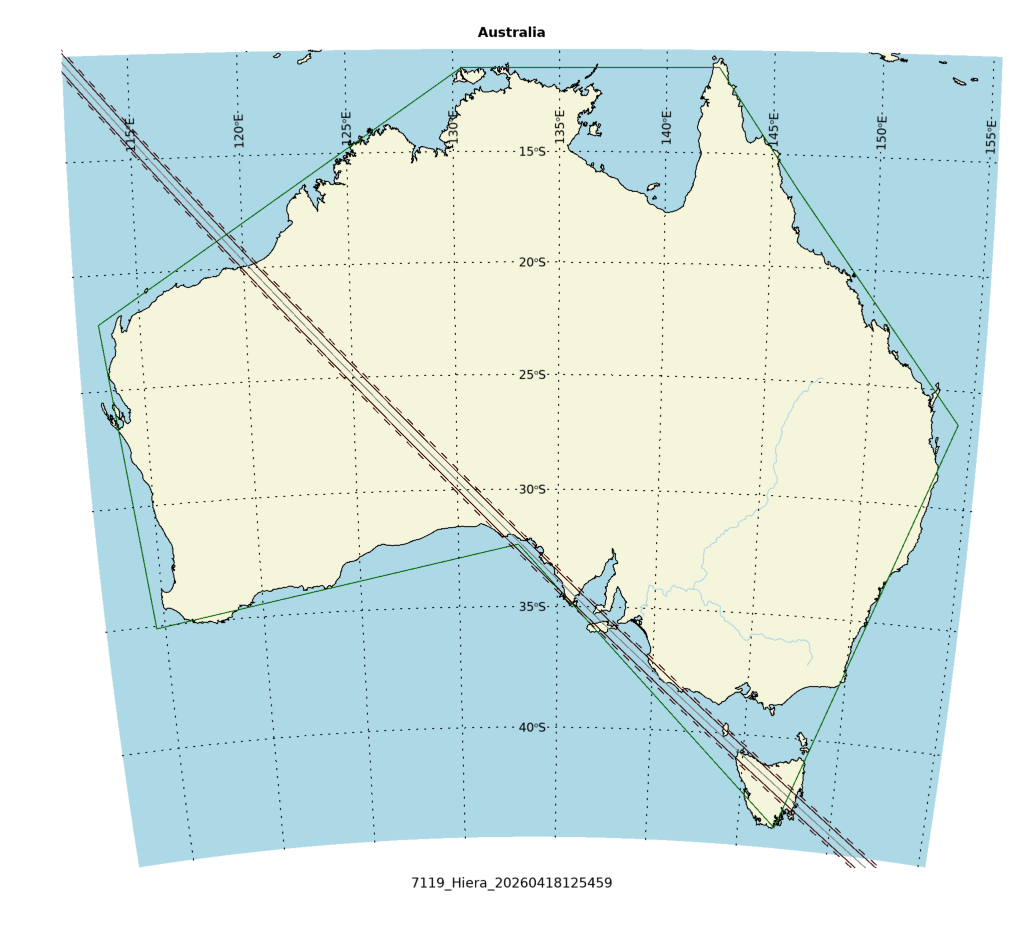
Occultation event with (7119) Hiera, event index number 3653
Regions able to see the event: Australia
Geocentric closest approach at 2026/04/18 12:54:59 UTC
J2000 position of star is 10:30:00.3 -13:01:08
Equinox of date position of star is 10:31:18.0 -13:09:16
Star is 121 degrees from the moon. Moon is 2% illuminated.
Stellar brightness G=16.4, apparent brightess of occulting body is G=15.2
Use an exposure time of 1.35 seconds with the standard RECON-QHY system.
SNR of 3.5 per integration for unocculted signal
Expected flux drop is 23% with SNR of 0.8 for the occulted depth (per occulted point)
Apparent velocity is 10.7 km/sec on the sky relative to the star, or, 11.4 arcsec/hr.
Position angle of asteroid motion is 141.1 degrees
The recommended exposure time corresponds to 14.4 km per image.
The 1-sigma error in the time of the event is 3.6 seconds.
The 1-sigma cross-track error in the shadow position is 3.6 km.
The sky-plane scale is 3370.9 km/arcsec.
Diameter estimates:
66.4 km assuming a 5% albedo, maximum of 6.2 sec for a central chord
27.1 km assuming a 30% albedo, maximum of 2.5 sec for a central chord
Cross-track diameter of 59.2 km used for deployment plan.
Star training set for 7119_Hiera, (2026/04/18 12:55UT) Object RA Dec mag sep mel Regulus 10:09:46.2 +11:50:16 1.3 25.56 107 Alphard 09:28:52.8 -08:46:26 2.0 15.93 105 PPM 223118 10:34:30.3 -13:32:25 6.4 0.87 122 PPM 223023 10:30:25.5 -12:34:12 8.3 0.62 121 PPM 223067 10:32:40.1 -13:14:10 9.2 0.34 121 7119_Hiera 10:31:18.0 -13:09:16 15.2 121 Positions are for equinox of date


Star training set for 7119_Hiera, (2026/04/18 12:55UT) Object RA Dec mag sep mel Regulus 10:08:21.9 +11:58:02 1.3 25.56 107 Alphard 09:27:35.2 -08:39:30 2.0 15.93 105 PPM 223118 10:33:12.5 -13:24:15 6.4 0.87 122 PPM 223023 10:29:07.7 -12:26:06 8.3 0.62 121 PPM 223067 10:31:22.3 -13:06:02 9.2 0.34 121 7119_Hiera 10:30:00.3 -13:01:08 15.2 121 Positions are for J2000